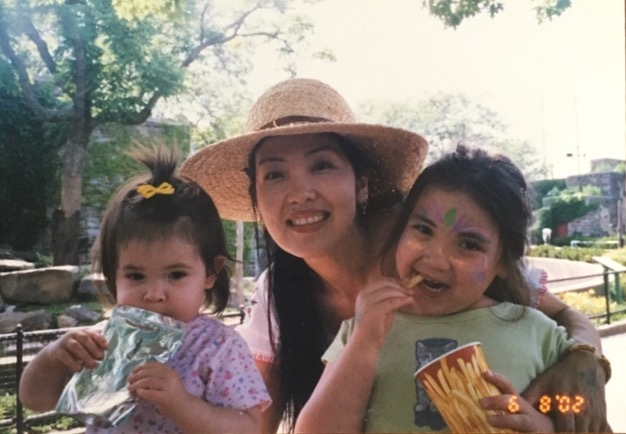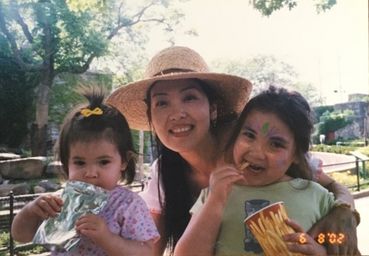I remember during the peak of quarantine in the spring of 2020 my mom came home from the grocery store with a story of an odd encounter with a stranger. My mom told me that a young man at the grocery store had told her to “go back to her own country.” My mom said it in a very calm and nonchalant manner, but I immediately became infuriated. How could someone speak to my mom like that?
It’s not like I forgot that my mom is Japanese, but after she told me about this encounter, I remembered that this is the reality for many Asian Americans, as well as many other minority groups.

My mom continued to tell her story. She said she had laughed awkwardly when the stranger had said this comment and the stranger’s girlfriend whispered “I’m sorry” to my mom behind the back of her partner. I could not believe my mom remained so unbothered. I remember thinking I would have punched the guy immediately, so I questioned why my mom had chosen to go about the situation in the way that she did. In a way, I guess my mom was used to it.
There has been a surge in discrimination against Asian Americans amid the global pandemic of COVID-19. Anti-Asian racism has led to an increase in violence against Asian Americans, specifically the elders in the community, which has ultimately resulted in fear and distress.
In her article for Time Magazine, Cady Lang explains how xenophobic terminology such as “the China virus” or “kung flu” has only fueled the fire that has deemed it okay in some people’s minds to commit hate crimes against Asian American populations. Ultimately, labeling COVID-19 as the “Chinese virus” has provided people with the approval to perpetrate acts of violence and attack Asian Americans.
As discussions and attention surrounding Asian American racism continues as more accounts of violence and discrimination come to light, I can’t help but think of my experience as an Asian American.

I am “Wasian,” meaning I am half-white and half-Asian. Although I went to a predominantly white school, my white-passing privilege allowed me to easily blend in. However, blending in meant neglecting my Japanese heritage.
I have gone through a majority of my life not only forgetting about my Japanese side, but ultimately growing to resent it. I did not like the times when people made fun of my eyes. I did not like it when it felt like people would be staring at me during history class lectures about World War II and Pearl Harbor. I did not like it when a kid in middle school exclaimed that my grandfather killed his grandfather during WWII. I did not like when people made fun of me for eating Japanese food. These types of experiences led to me to grow to not like 50% of myself. It seemed that whenever I was not home, I would ignore the part of me that was Japanese.
Now, I am twenty years old, and I am extremely sad that I have lost those parts of myself that make me Asian American. I do not feel like I fit in with Asian Americans, but I also feel that I do not fit in with white people. It was not until I was scrolling through my TikTok “For Your Page” that I felt a small sense of belonging to a group. I heard “AYO…Wasian check” and proceeded to see half-white, half-Asian kids showing off their plethora of rice cookers and items related to Asian cultures to the tune of “Sweet Caroline.” A smile formed on my face as I was exposed to the world of people like me. People who struggle with their identity of being half-white and half-Asian.
While all Wasians are obviously not the same, and we all have different experiences, it was comforting to know that I am not alone and that my feelings and struggles are valid. We need these types of communities and support now more than ever, as racist sentiments and violence continue to purge our society. Even if it is coming from an app that features a keto lady and her bell peppers, I am glad to know that there are outlets and communities for many groups of people, including Wasians.


